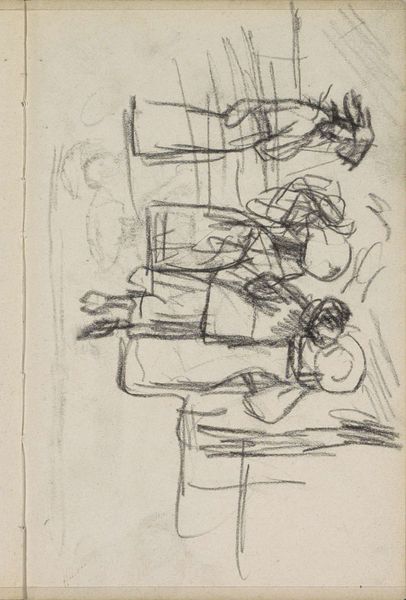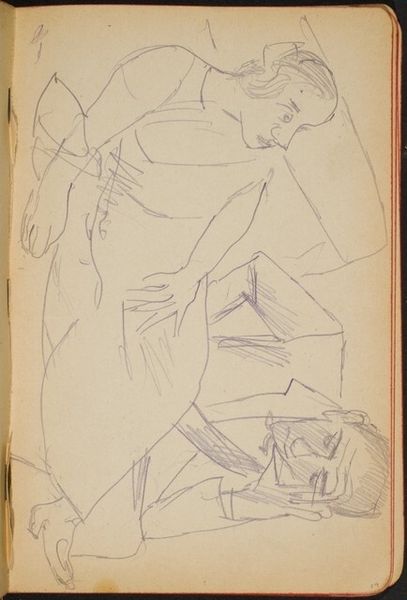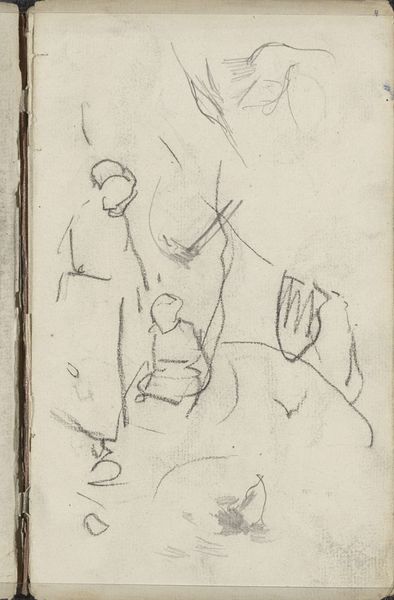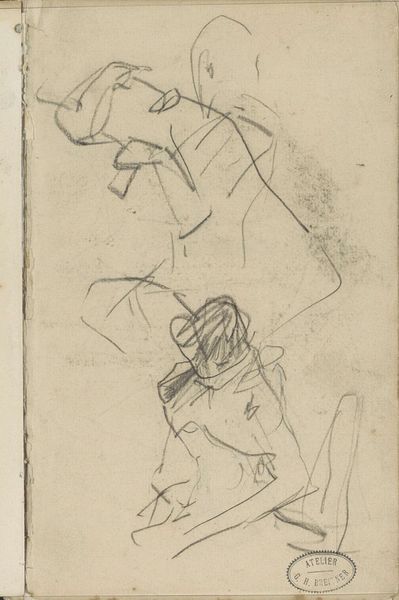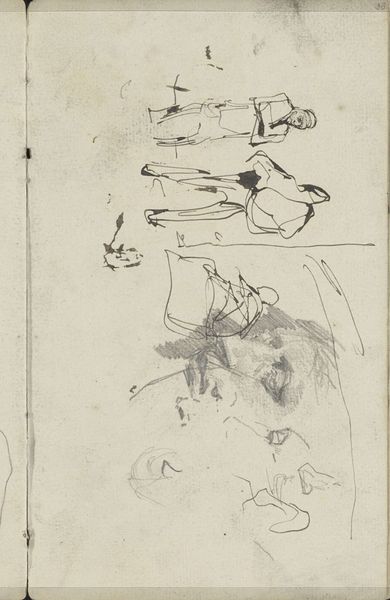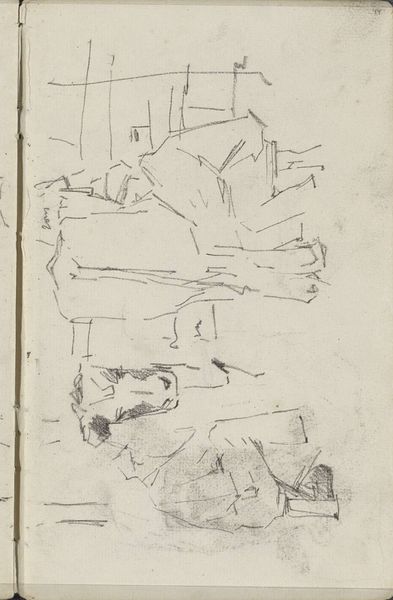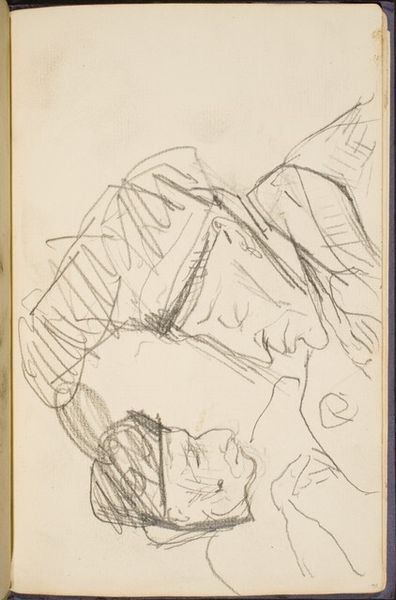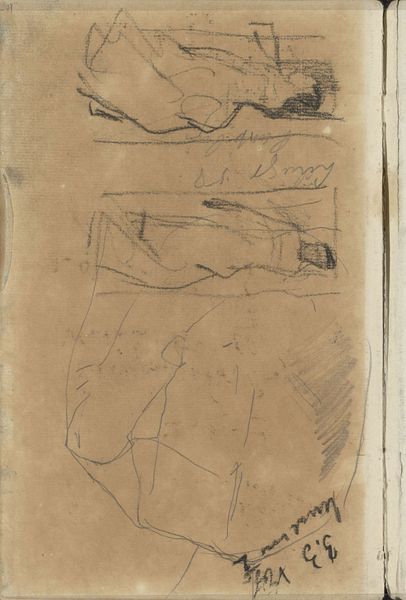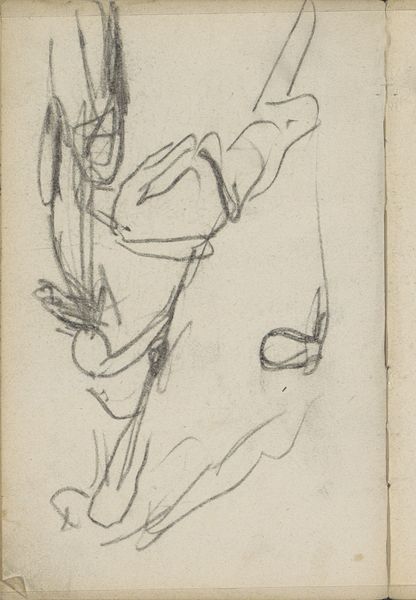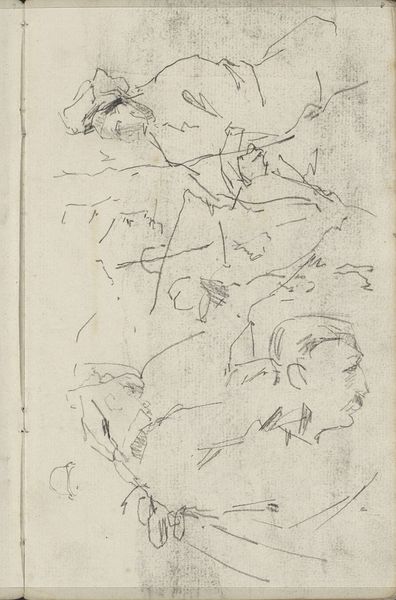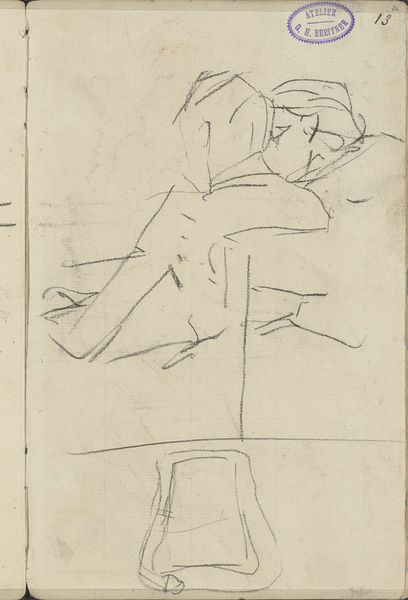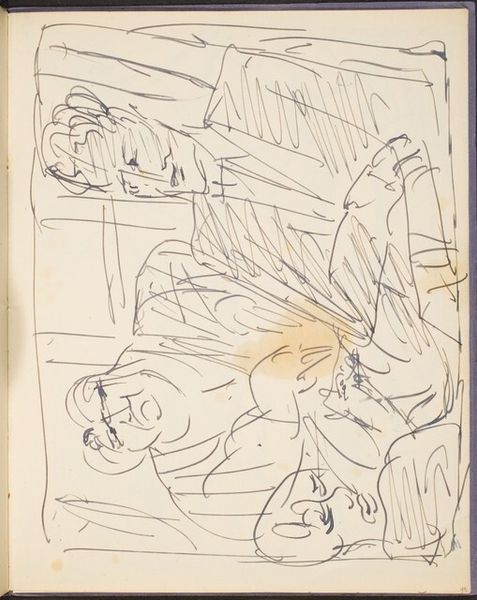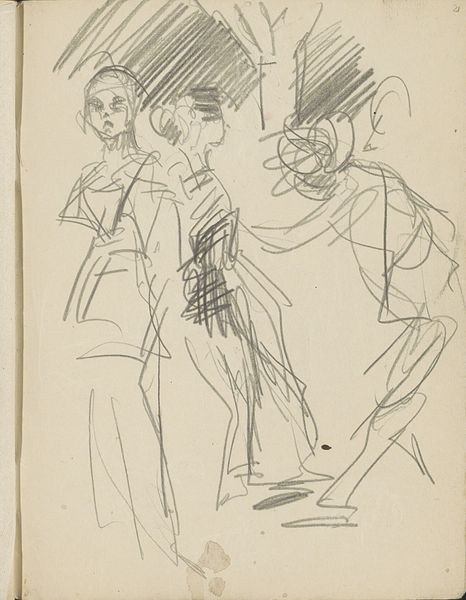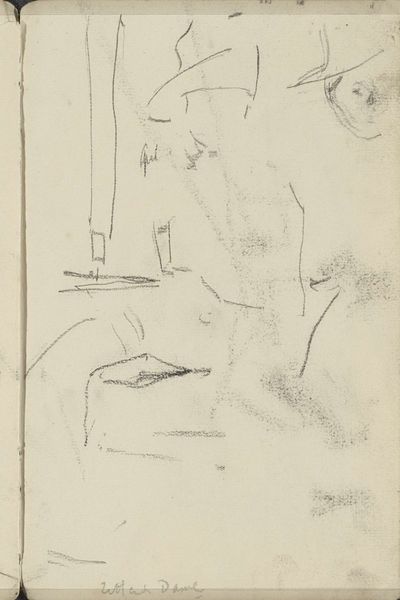![mehrere Studienköpfe (Several Head Studies) [p. 41] by Max Beckmann](/_next/image?url=https%3A%2F%2Fd2w8kbdekdi1gv.cloudfront.net%2FeyJidWNrZXQiOiAiYXJ0ZXJhLWltYWdlcy1idWNrZXQiLCAia2V5IjogImFydHdvcmtzLzhjN2RiNGJmLWUyN2QtNDg4Zi1hMGM3LWMzMzNmNmI1OTViOS84YzdkYjRiZi1lMjdkLTQ4OGYtYTBjNy1jMzMzZjZiNTk1YjlfZnVsbC5qcGciLCAiZWRpdHMiOiB7InJlc2l6ZSI6IHsid2lkdGgiOiAxOTIwLCAiaGVpZ2h0IjogMTkyMCwgImZpdCI6ICJpbnNpZGUifX19&w=1080&q=75)
drawing, pencil
#
portrait
#
drawing
#
sketch book
#
german-expressionism
#
figuration
#
pencil
#
expressionism
Dimensions: sheet: 19.7 x 13 cm (7 3/4 x 5 1/8 in.)
Copyright: National Gallery of Art: CC0 1.0
Editor: This page, number 41 from Max Beckmann's sketchbooks, titled "Several Head Studies," features what looks like pencil on paper. I'm struck by the immediacy and intimacy of the drawing; it feels very raw and unfinished. What jumps out at you when you look at it? Curator: I'm interested in how the artist's hand is evident. Notice the layering of pencil strokes, the visible pressure, and the quick, almost frantic quality of the lines. This reveals a lot about the process itself, doesn't it? It highlights the labor involved, the repetitive act of sketching. Editor: Absolutely. It almost feels like he was working out ideas or maybe just practicing. So, in this context of labor and material, would this page be considered less valuable than a finished painting, perhaps? Curator: Not necessarily less valuable, just valued differently. The sketch offers insight into the artist’s process that a finished work might obscure. Consider how this sheet of paper, likely mass-produced, became a site for Beckmann's exploration. What were the material conditions that allowed for the easy availability of paper and pencils during this time? The rise of industrial manufacturing played a key role here. Editor: That's fascinating. It’s not just about the "art" but about the availability of the materials to even make the art. Did the rise of easily available and mass-produced materials have a huge impact on art creation, in general? Curator: Precisely! And consider where this sketch would have been created—a private studio, likely. How did that dedicated space of art production shape Beckmann’s thinking and creative processes? Also, note the lack of colour in favour of the directness afforded by pencils and paper. Editor: I hadn’t considered all that. Now, looking at this page, I'm seeing the impact of industrialization and the very conditions of art production itself, not just the images. Thank you for providing that different view. Curator: And I have you to thank for helping explore the potential here for deeper reading. It’s always great to examine art making as its own field of labour, tied up with cultural and economic factors.
Comments
No comments
Be the first to comment and join the conversation on the ultimate creative platform.
